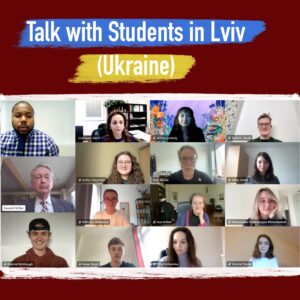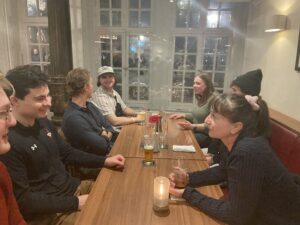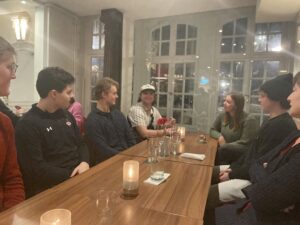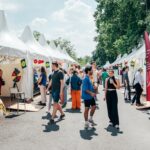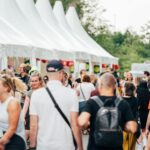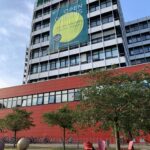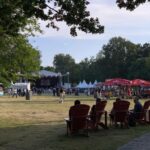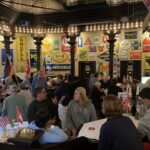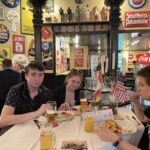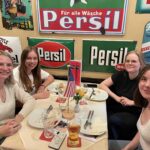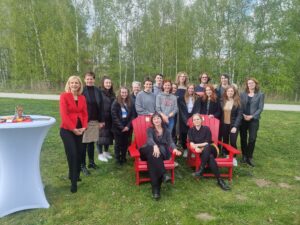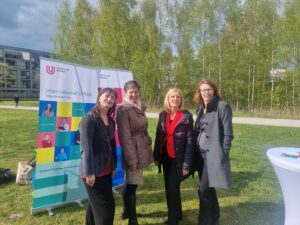by Riley Robinson ’25
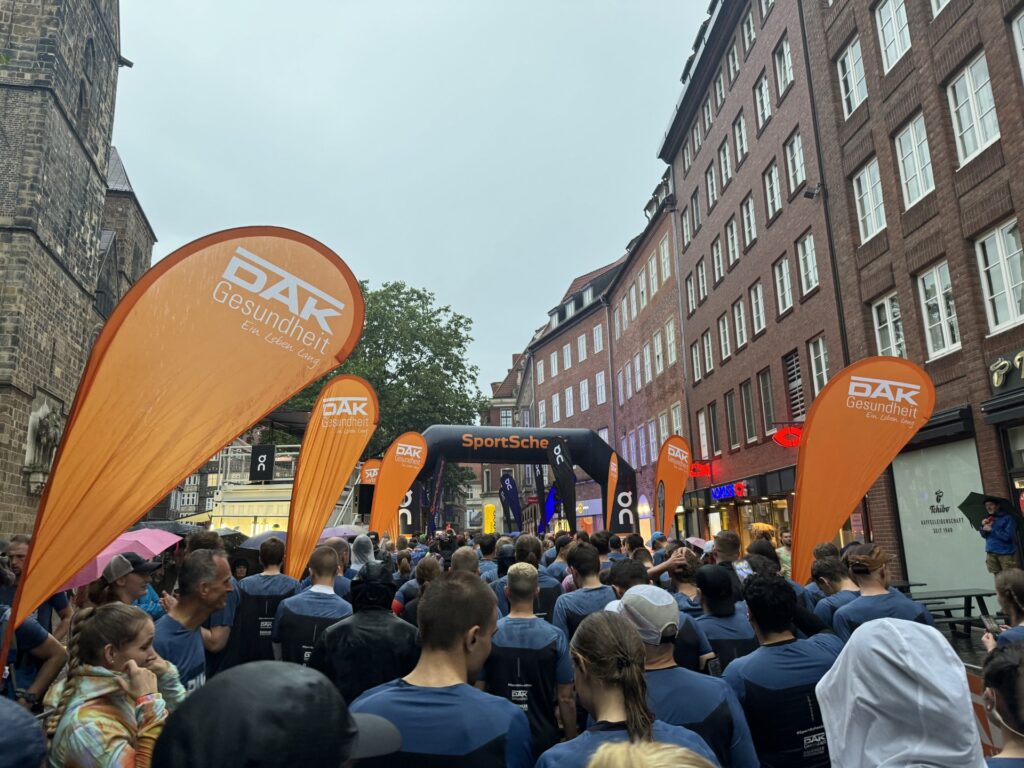
Getting ready for the Bremen night run.
I first heard about the Nachtlauf at the welcome dinner shortly after arriving in Bremen. A former DiB student and Dickinson alumni listed it as a must-do during the spring semester in Bremen. However, the encouragement came with an adamant warning: “ONLY do the 5k”. It made sense at the time, given that I had never run more than a 5k even on a treadmill. However, a few months later, when our Program Coordinator Insa delivered a reminder about the Nachtlauf and how we were to register, I was immediately infatuated with the idea of running a half marathon in Germany. This decision came with a little over a month to go before the race, which, as you know, is simply not enough time to train for something like this when your cardio is in the gutter. Nevertheless, I was able to recruit someone crazy enough to run it with me, fellow DiB student and Vanderbilt representative Grear.
Throughout the next month, Grear and I trained extensively for the race. Fueled by raw determination, a slight addiction to crunching run times on the Strava app, early mornings, late nights, and a few David Goggins interviews, we were up to half marathon condition in no time. The journey was a surprisingly great way to learn about Bremen as well. It allowed us to experience new areas of the city that had previously been under our radar. Running through the tranquil, picturesque dairy pastures of Blockland offered a much-needed escape from the bustle of city life. And completing final stretches of long runs along the Weser allowed us to soak in the buzz of social life along the grassy fields adjacent to the river, reenergizing us for the final few miles. Before we knew it, race time was near. Despite the Berlin excursion being the week of the race, which obviously isn’t an expert precursor to a half marathon, we were ready.
Race day. What started out as a beautiful, sunny day, quickly turned into the most violent summer storm we’ve had in the early season. Ninety-nine percent of the time it’s the kind of storm I’d be more than content with sitting outside and watching as the rain pours down onto the earth, smelling that fresh scent of summer rain while feeling the cool breeze wash over my face. But that night, I must run 13 miles in it. What made it worse was that it’s the first rain we’d seen in weeks, and it defied the typical Bremen storm (intermittent spurts of light showers) with consistency and heaviness. But nothing comes easy.
The hum of excitement couldn’t be dampened. The beginning and end of the race was held in the Marktplatz, the plaza front and center of the Dom. The Marktplatz was alive and teaming with racegoers, all in matching blue race shirts and soaking wet from the cold rain, desperately trying to avoid the downpour. Amidst the tents, vendors, and various encampments of people, I located my team (Grear). After a messy rush to check bags and seek shelter, we were in the starting line a little after 8:55 pm. Crammed in with the other racers, we waited in anticipation. At 9:00, the starter gave us the signal. We were off.
The race was a blur. The route followed the pedestrian walkways alongside the Weser, through city streets slick with rain and dark, and muddy dirt paths with little light. Over bridges and through tunnels crowded with spectators, the rain never let up, and we trudged through puddles and mud in the dark with a thousand others. The one thing I noticed right away is that I was one of the only racers hooting and hollering at the spectators cheering us on. This is the kind of energy I typically bring to these sorts of events, but it fell flat against the silent thud of shoes on the pavement. This was much more of an American way of participating. I’d learned the Germans tend to be quieter and uniformed, and a half marathon was no exception to this attitude. I was still surprised by the lack of excited expression. My favorite part of the race was running through a tunnel under the bridge near the Beck’s factory, where a group of musicians with large drums beat to a driving rhythm that echoed off the walls, creating an acoustic effect that heightened the moment and injected much needed energy.

Finished the Night Run!
A little under two hours later, around 11:00 pm., we crossed the finish line. As the tiny sparklers went off around the path to the finish line, with crowds cheering us on, an overwhelming sense of accomplishment fell on me. Despite being drenched, chilled, and utterly exhausted, I couldn’t help but embrace the post-race euphoria that hung heavy in the air as we gathered ourselves in the crowd of racers who had finished with us. It was official. The Americans had conquered the Nachtlauf.

